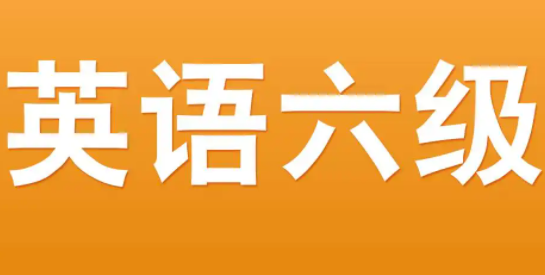
动词过去式和过去分词的变化规则
动词过去式和过去分词有规则变化和不规祥御则变化两桐祥种.
1) 规则变化
情况 例词 读音与说明
动词原形 过去式 过去分词
一般在动词原形后加-ed look
call
open
need looked
called
opened
needed looked [lukt]
called [kC:ld]
opened [5EupEnd]
needed [ni:did] ①-ed在清子音音素后
发音为〔t〕,在浊子音后发音为〔d〕,在母音后发音也为[d]
②-ed在〔t]、〔d〕
后发音为[id]
③但fix的过去式和过去
分词x不双写,为fixed.
以-e结尾的动词加-d move
phone
hope
agree moved
phoned
hoped
agreed moved [mu:vd]
phoned [fEund]
hoped [hEupt]
agreed [E5^ri:d]
以子音字母加y结尾的动词,变y为i,
再加-ed study
carry
try studied
studied
carried studied [5stQdid]
carried [5kArid]
tried [traid]
以原音字母加y结尾的词,直接加-ed play
enjoy
stay played
enjoyed
stayed played [pleid]
enjoyed [in5dVCid]
stayed [steid]
末尾只有一个子音字母的重读闭音节词,双局宴搏写该子音字母,再加-ed s
plan
fit sped
planned
fitted sped [stCpt]
planned [plAnd]
fitted [5fitid]
以-r音节结尾的词,双写r字母,
再加-ed prefer
refer preferred
referred preferred [prI`f:d]
referred [ri5fE:]
2) 不规则变化
英语中有些动词的过去式和过去分词形式变化不规则,可分为五种情况.
常用英语时态时间状语1.一般现在时:always,usually,often,sometimes,seldom,rarely,never,every day(morning,Monday,week,...etc.)every other day,every there years,once a week(day,month,...etc.),...2.一般过去时:last week(night,Monday,month,year,...etc.)four years ago(days,month,...etc.)before1980(three,liberation,从句,...etc.)the day before yesterday,the day before last,the year before last,just now,a monent ago,yesterday,yesterday morning,this morning,at first,at last,in the end,finally,then,...3.一般将来时:next week(Monday,month,year,...etc.)in three days(an hour,...etc.)tomorrow,tomorrow morning,the day after tomorrow,the day after next,the year after next,tonight,in 2010(2016...etc.)this evening,this Saturday,after Wednesday,soon,sometime next week,one day in futuer,sooner or later,...will: probably, I’m sure I (don’t) think I wonder (Caution: After I hope, we generally use the present.)4..现在进行时:now,these days(weeks,months,...etc.)this month(week,...etc.)Look!,Listen!,...5.过去进行时:this time yesterday, this time last Friday, in those days, at nine last night, from one to three yesterday afternoon,.
初中 高中英语书后面有张表 全部都是的
原形 过去式 原形 过去式
am, is was lend Lent
are were let let
bee Became lie lay
begin began lose lost
blow blew make made
break broke may might
bring brought mean meant
build built meet met
burn burnt put put
buy bought read read
can could ride rode
catch caught ring rang
choose chose run ran
e came say said
cost cost see saw
do did sell sold
draw drew send sent
drink drank shall should
drive drove shine shone
eat ate sing sang
fall fell sit Sat
feed fed *** ell *** elt
feel felt speak spoke
fight fought spend spent
find found stand stood
fly flew sweep swept
fet fot swim swam
get got take took
give gave teach taught
go went tell told
Have, has had think thought
hear heard throw threw
hold held understand understood
hurt hurt wear wore
know knew will would
learn learnt win won
leave left Write wrote
do :done
will:would
have:had
这个就在一般过去时或者在虚拟语气中 用 如果作为过去分词的话 用处就更多了
发生在过去的事情 形式用动词+ed
不规则动词自己背表
过去式是指动词的过去式,比如do的过去式是did
而过去时是指句子的时态是过去,比如,I ate potatoes last night.
过去式是指动词的过去试。意为过去发生的动作,到现在已经停止这个动作。
动词过去式,一般直接加ed, 当然,也有例外的要特别记,例如take-took, bring-brought, buy-bought等等。
系动词的也是特殊的,需要记。如:am-was, is-was, are-were.....
还有其他的,找语法书认真看看
after went back to the classroom
简单来说就是以重读闭音节结尾的双写在加ed
重读闭音节:在单词后三位中,第一个为子音(除a,e,i,o,u外的字母),第二个为母音(a,e,i,o,u),第三个为子音,双写最后一个子音字母,再加ed
例如:sped begged fretted dragged dropped planned dotted dripped
规则动词的过去式词尾变化有几种:1.一般情况下加ed,如watched, planted, watered, pulled, climbed, picked。2.以不发音字母e结尾的加d,如liked, moved, tasted。3.以子音字母加y结尾的变y为i再加ed,如study——studied。4.以1个母音字母加1个子音字母结尾的重读闭音节,双写最后一个子音字母再加ed,如s——sped。词尾读音有3种:a.在浊子音和母音后读[d],如lived, watered, listened, played。b.在清子音后读[t],如liked, helped, watched。c.在[t],[d]音后读[Id],如planted, wanted, handed(上交)。
动词原形变成现在进行式,结构为:am/is/are+动词的ing形式。am/is/are取决于主语的人称和数的变化(我用am,你用are,is就跟他她它,我们你们和他们一律全用are,are,are),动词的ing形式,则遵循这样一个法则:1.直接在动词末尾加上ing,如:doing,playing,seeing,working2.不发音e结尾的,去e加上ing。如:came-caming,make-making,dance-dancing等3.以重读闭音节结尾,并且只有一个子音字母的,双写子音字母在加ing如:begin-beginning,run-running,sit-sitting,shop-shopping等。



